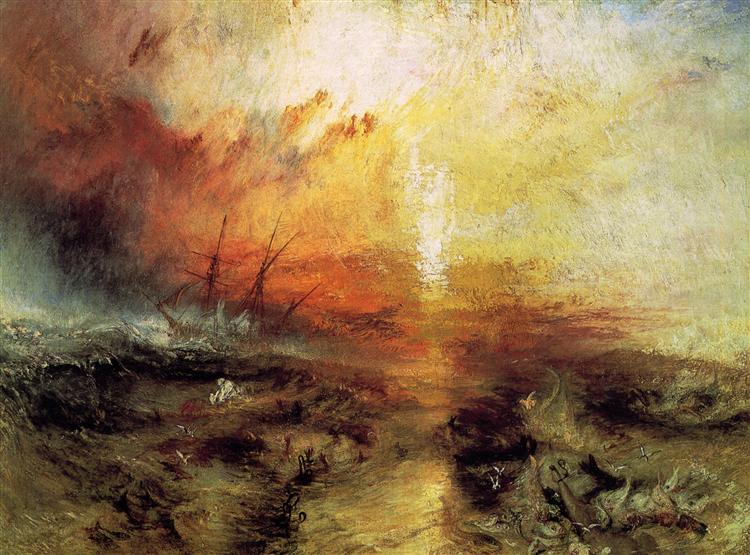J.M.W. Turner, The Slave Ship
Joseph Mallord William Turner’s The Slave Ship depicts a 1781 incident reported in the widely read History of the Abolition of the Slave Trade, by Thomas Clarkson. Clarkson’s account, reprinted in 1839, undoubtedly was the reason Turner chose this subject for this 1840 painting. The incident involved the slave ship Zong, en route from Africa to Liverpool. The ship’s captain, on realizing that his insurance would reimburse him only for the slaves lost at sea but not for those who died en route, ordered more than 50 sick and dying slaves to be thrown overboard.


Turner’s frenzied emotional depiction of the dumping of the sick slaves into the sea matches its barbaric nature. The artist transformed the sun into an incandescent comet amid flying scarlet clouds. The slave ship moves into the distance, leaving in its wake a turbulent sea choked with the bodies of slaves sinking to their deaths. The relative scale of the miniscule human forms compared with the vast sea and overarching sky reinforces the sense of the sublime, especially the immense power of nature over humans. Almost lost in the boiling colors of Turner’s painting are the event’s particulars, but on close inspection, the viewer can discern the iron shackles and manacles around the wrists and ankles of the drowning slaves, cruelly denying them any chance of saving themselves from the predatory fish circling about them.[1]
- Fred S. Kleiner, Gardner’s Art Through the Ages: The Western Perspective, vol. 2, 15th ed., (Boston: Cengage Learning, 2017), 692-693. ↵

